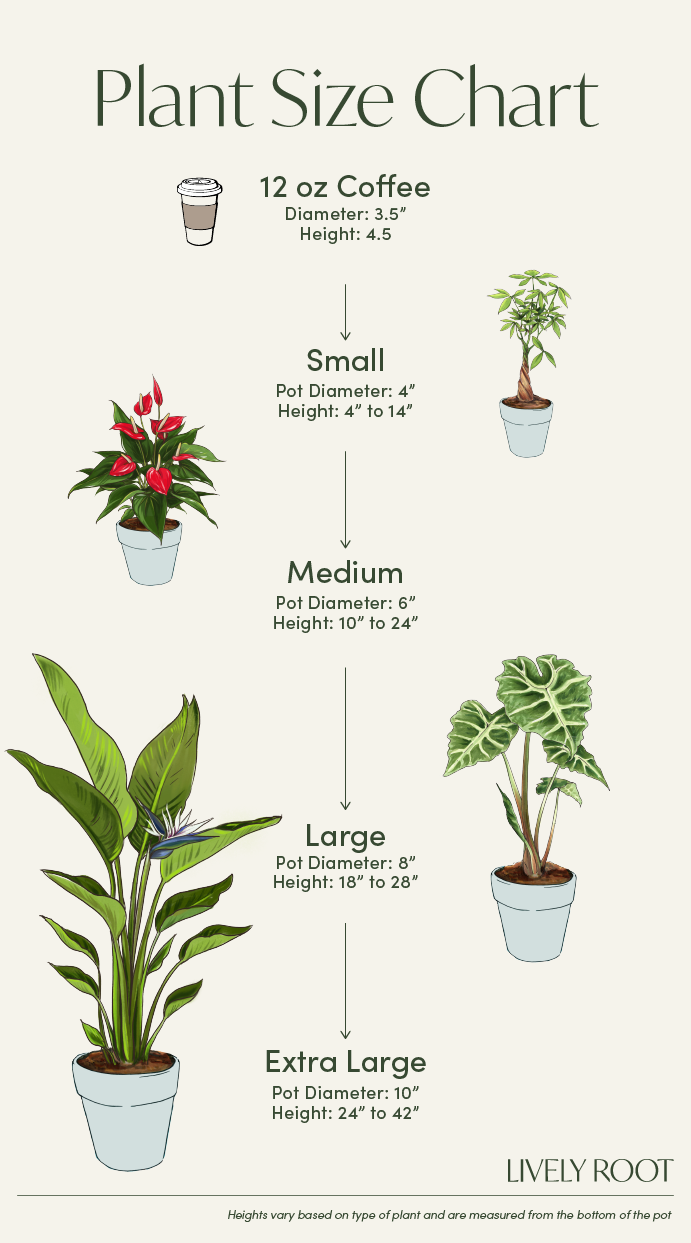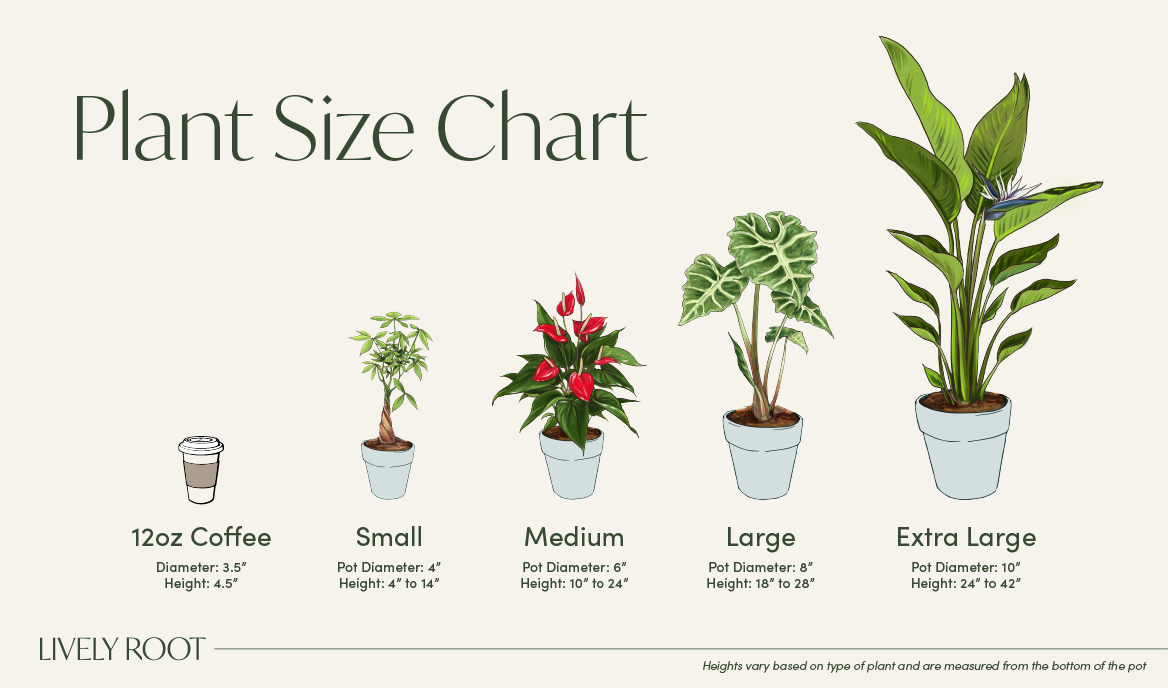

We know there are different types of Snake Plants, and it can be tough to know which one to pick. The variegated Snake Plants, or Sansevieria Laurentii, stands out for its remarkable durability and ease of care. Known for thriving in various conditions, these plants are visually appealing and robust – perfect for 'set and forget' care. They are ideal for enhancing your personal green oasis and double as efficient air purifiers. Native to West Africa, they are also favored in Feng Shui for their harmonizing qualities.
Sansevieria Laurentii Care Guide & Presentation

Best in medium light, but can survive in a range of low to high.
Allow the soil to dry out completely between waterings.
Doesn't prefer humidity, but they can tolerate it.
Keep on the warmer side to keep them growing healthy.
Outside: Grow in morning light, partial shade (4-6 hours) where nights are above 45°F.
Indoors: This plant prefers bright, to medium indirect light but can tolerate low light conditions.
Sansevierias don't need a lot of fertilizer so fertilize only twice a year in the early spring and mid-summer. Use a balanced liquid fertilizer.
When receiving the Snake plant, do not repot immediately but wait at least 6-12 months. They like to be a bit root-bound. Repot in the spring, using a 2" bigger pot to keep the roots drier. (Too big of a pot could cause the soil to dry slower, which is not helpful.) Use a succulent soilless potting mix with perlite to help with drainage. Place a piece of screening at the bottom of the container over the drainage hole to secure the soil and allow to drain.
Use a well-draining cacti and succulent potting mix with perlite to help with drainage.
Water your plant in the old pot before transferring over and let sit an hour.
Add cacti and succulent soil to the bottom to elevate the root ball. Lift the plant and release the roots against the existing planter. Use a clean knife or garden trowel to wedge between the pot and the soil to loosen.
Inspect the roots. Notice if there are any dead or rotting roots and trim off with sterile pruners.
Ensure the plant is sitting about 1 inch below the edge of the pot to avoid water spillage. Add more soil and backfill around the sides by tamping down. Fill up to the soil line but not over.
Water thoroughly, leaving the soil damp but not soggy. If settling occurs, add more soil.
Water well to dampen the soil and let drain.
Using a sharp knife, trim off any dead or damaged leaves from the area closest to the soil. If a leaf is damaged, cut off the browning or damaged part at any point on the leaf. Remove any dust with a damp cloth wiping gently up both sides of each leaf, supporting them with the other hand. Remove any debris on the soil and replenish soil if needed.
Cut a leaf off at the base and place them in a container tall enough to hold the leaf upright. Add about an inch of water at the bottom and change the water weekly. Keep the leaf in medium indirect sunlight while they are beginning to form roots. Once roots are at least 1-2 inches long, plant them with rooting hormone mixed into the well-draining succulent and cacti mix. Water and place in bright to medium, indirect light. Use a wooden dowel to train them to stand upright until the roots are more anchored and secure.
Sansevieria Laurentii: Overview
The Variegated Sansevieria Laurentii (Sansevieria trifasciata ‘Laurentii’) is a snake plant variety with variegated, sword-like leaves edged with stripes of yellow. Sansevieria Laurentii is part of the Asparagaceae family. Having formerly been grouped into a separate genus (Sansevieria), snake plants have recently been reclassified as Dracaena plants due to the numerous molecular similarities discovered. Variegated Sansevieria is native to West Africa, and it’s a highly adaptable and low-maintenance plant. It thrives as an indoor plant or outdoors in hardiness zones 9-11 as long as the night temperatures stay above 45°F.
When mature, this tropical plant can reach up to 4 ft. in height. Quickly adapting to various light conditions, the Dracaena trifasciata ‘Laurentii’ is considered an ideal low-light plant. It is suitable for homes without pets, as it is toxic to pets if ingested.
In Feng Shui, the Variegated Snake Plant is believed to bring good luck and protection, often placed by the entrance to welcome positive energies into a home or given as a housewarming gift.
Sansevierias are hardy and beautiful succulents that will enchant plant lovers, whether they prefer compact plants like Sansevieria Samurai or rarer varieties like the ethereal Sansevieria Moonshine or the slim-leaved Sansevieria Fernwood.
Snake Plants: Benefits
- An excellent air purifier that cleanses the indoor air from toxins
- Lucky plant in Feng Shui
- One of the best easy-care houseplants
- It’s tolerant to low light
- Beautiful variegated leaves with a sunny yellow stripe
Sansevieria Trifasciata: Alternative Names
- Snake Plant
- St. George’s Sword
- Dracaena Trifasciata
- Mother-in-Law’s Tongue
- Viper’s Bowstring Hemp
Laurentii Snake Plant: Care Guide
Sansevieria Laurentii care is so easy that the plant is sometimes described as indestructible. Still, we’ve included some tips on how to care for your snake plant.
Watering and Humidity
Sansevieria Trifasciata Laurentii doesn’t require a lot of water, but it’s necessary to let the soil dry between waterings. Depending on the climate, water your snake plant once a week or every 10 days. While it tolerates humidity, the plant prefers drier air.
Light and Temperature
Snake plants’ light requirements are easy to meet, as they can tolerate various conditions. They prefer medium light but adapt easily to low-light conditions and even artificial light. Dracaena Trifasciata can also grow in bright light as long as there is no direct sunlight to scorch its leaves. Snake plants prefer warmer temperatures that range from 55℉ to 85℉ for best growth.
Soil and Repotting
Use a cacti and succulent potting mix when repotting your Snake Plant Laurentii. The soil needs to be well-draining to ensure protection from root rot. You don’t have to repot immediately when you receive your plant. Wait until it gets slightly rootbound. Then repot during springtime into a 2-inch larger pot.
Feeding and Propagation
Snake plants don’t need a lot of feeding, and it’s best to fertilize only twice a year, during spring and late summer. Use a balanced, water-soluble fertilizer. Sansevierias are very easy to propagate via cut leaves. Cut off a healthy leaf and put it into a tall, stable container filled with several inches of water. Change the water regularly until the roots begin to form.
Pruning, Cleaning, and Common Issues
Prune any damaged or dead leaves. Cut off any brown leaf tips to keep your Laurentii Snake plant looking neat. Wipe the leaves with a damp cloth occasionally to remove dust.
Snake plant issues include drooping yellow leaves - a sure sign of overwatering. Crisp, brown tips and spots on the leaves may mean underwatering. Move your plant away from direct sunlight, which might burn its leaves.
Sansevieria Laurentii: Placement, Companion & Alternative Plants
Laurentii Sansevieria is a striking plant with beautiful leaves that will look amazing in different interiors. If you’re lucky, this gorgeous plant will also produce greenish-white blooms with a lovely perfume when it matures.
Best Locations & Uses
- It is a perfect plant for beginner gardeners or people with busy schedules.
- Ideal plant for low-light spaces and offices with artificial lighting.
- Great for plant lovers with no pets.
- Wonderful gift plant because of its symbolic meaning of good luck and protection.
- Excellent drought-tolerant plant for dry and warm climates.
Companion Plants
The Sansevieria Laurentii snake plant is vibrant and has an eye-catching leaf pattern. It will look amazing when grouped with other plants with bright green foliage.
- ZZ Plant (Zamioculcas zamiifolia): Undemanding and easy to care for, the ZZ Plant stands out as an excellent plant for beginners and an exceptional air purifier.
- Split Leaf Philodendron (Monstera deliciosa): A striking, humidity-loving houseplant with large, pierced leaves, the Split Leaf Philodendron requires plenty of space to thrive.
- Flamingo Flower (Anthurium spp. – Red): The charming Flamingo Flower has bright green, glossy leaves and produces amazing red inflorescences shaped like hearts.
Alternative Plants
Here are some pet-safe plants that you might want to consider instead of the Sansevieria Laurentii if you’re a pet owner:
- Peacock Plant (Calathea roseopicta): The spectacular Peacock Plant displays a leaf pattern in several hues of green on top and purplish-pink undersides.
- Money Tree Plant (Pachira aquatica): The bright green leaves and unusual braided trunk of the Money Tree Plant give it an exotic appearance; it’s known as one of the best good luck plants in Feng Shui.
- Watermelon Peperomia (Peperomia clusiifolia 'Watermelon'): With its striped leaf pattern that resembles a watermelon, the Watermelon Peperomia is adorable, compact, and easy to care for.
Order Your Variegated Snake Plant From LivelyRoot Today!
Get a Variegated Laurentii Snake Plant for sale from Lively Root and enjoy its beauty and resilience for years to come!










































































































